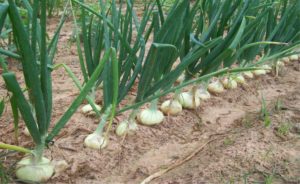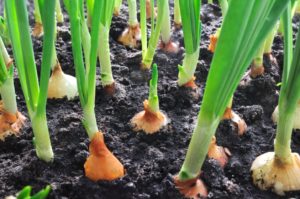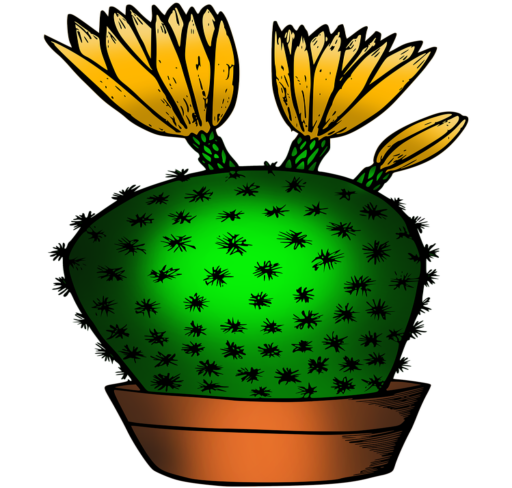How to Sow and Plant Onions and Scallions
Sowing Seed Indoors

Both Scallions and Onions may be grown from seed, from young bare root plants or from sets (small bulbs). Make sure to choose the correct variety for your day length.
Onion seed may be started indoors in small flats in seed starting mix 6-10 weeks before the last frost.
Sow thinly and cover with ¼ inch of seed starting formula. Keep moist and maintain a temperature of about 60-65 degrees F.
Seedlings emerge in 7-14 days.
As soon as seedlings emerge, provide plenty of light on a sunny windowsill or grow seedlings 3-4 inches beneath fluorescent plant lights turned on 16 hours per day, off for 8 hours at night. Raise the lights as the plants grow. Incandescent bulbs do not work because they get too hot. Most plants require a dark period to grow, do not leave lights on for 24 hours.
Seedlings do not need much fertilizer, feed when they are 3-4 weeks old using a starter solution (half strength of a complete indoor houseplant food) according to manufacturer’s directions.
After danger of a heavy frost plant the seedlings in the garden when they are about the thickness of a pencil. Before planting in the garden, seedling plants need to be “hardened off”. Accustom young plants to outdoor conditions by moving them to a sheltered place outside for a week. Be sure to protect them from wind and hot sun at first. If frost threatens at night, cover or bring containers indoors, then take them out again in the morning. This hardening off process toughens cell structure and reduces transplant shock and sun burn.
Space 3-4 inches apart in rows 1-2 feet apart. Plant more closely if you plan to harvest scallions.
Onion Seeds (Short Day) – Red Burgundy, Ve…
Red Burgundy Onion Seeds: Red Burgundy is a classic red onion. An attractive and mild -… [More]
Soil Preparation in the Garden
Choose a location in full sun where you did not plant onions the previous year.
Apply a balanced organic fertilizer and work into the soil prior to planting. Onions prefer a pH of 6.0 – 7.0.
Onions prefer an organic soil that drains well. Work organic matter into your soil at least 6-8 inches deep, removing stones, then level and smooth.
Sowing Directly in the Garden
Sow onion seeds in average soil in full sun after danger of frost in spring. In frost free areas, sow in fall.
Sow thinly in rows 1- 2 feet apart and cover with ¼ inch of fine soil. Firm lightly and keep evenly moist.
Seedlings emerge in 7-14 days.
Thin to stand about 3 inches apart when seedlings are 1- 2 inches high.
Onions From Baby Plants

Onion Seeds (Bunching) – Evergreen White N…
Grow Heirloom Onions – Plant Evergreen Bunching Onion SeedsThis variety is a classic bu… [More]
Onions From Sets
Plant onion plants as soon as possible after you receive them, as soon as the soil can be worked, before the last frost.
Plant onion plants 1 inch deep, 5 – 6 inches apart, or 2 – 3 inches if you prefer to thin later for green onions or scallions. Water well.
Just press sets into the soil up to their tops, barely covered with soil 3-4 inches apart in rows 1-2 feet apart.
If sets are planted too deeply they will take longer to develop.
How to Grow Onions and Scallions
Keep weeds under control during the growing season. Weeds compete with plants for water, space and nutrients, so control them by either cultivating often or use a mulch to prevent their seeds from germinating.
Ample water is important at all stages of growth, especially when bulbs are forming. Onions are shallow rooted and tend to dry out during periods of drought. The best method to water is by ditch or furrow irrigation. This provides water to the roots while keeping the tops dry. If the tops are regularly wet they are more susceptible to disease.
Onions are heavy feeders, side dress with fertilizer about six weeks after planting.
Monitor for pests and diseases. Check with your local Cooperative Extension Service for pest controls recommended for your area.
Harvest and Preserving Tips

Pick green onions (scallions) when plants reach 6-8″ tall, while the stalks are still white at the bottom and fairly thin.
When harvesting onion bulbs, about 100 days from sowing, bend the tops over when about ¼ of the tops have already fallen over and turned yellow. After a few days, pull the bulbs and cover them with the foliage to prevent sunburn.
Allow onions to dry in the garden for up to a week, then cure them indoors in a warm, dry place with good air circulation for 2-3 weeks. Then cut off the foliage, leaving 1″ above the top of the bulb.
Clean the bulbs by removing dirt and any of the papery skin that comes loose when you handle them.
Put bulbs in mesh onion bags or old pantyhose and store in a cool, dry location. Check occasionally for any wet spots or mold and remove any damaged bulbs immediately to protect the rest.
All onions lose their pungency when cooked. To neutralize the flavor, sauté, parboil or microwave the onions briefly before adding to your recipe.
To minimize the discomfort of onion tears while chopping onions, work fast (but carefully!) and work closely to the kitchen fan. You can also use a food processor.
Besides fresh storage, small onions may be canned by the hot pack method.
Chopped, sliced or grated onions may be quickly dried in a food dehydrator and stored in air-tight containers on the pantry shelf.
Small whole onions may also be pickled, while larger ones may be used in mixed pickles or to flavor cucumber or tomato pickles.
